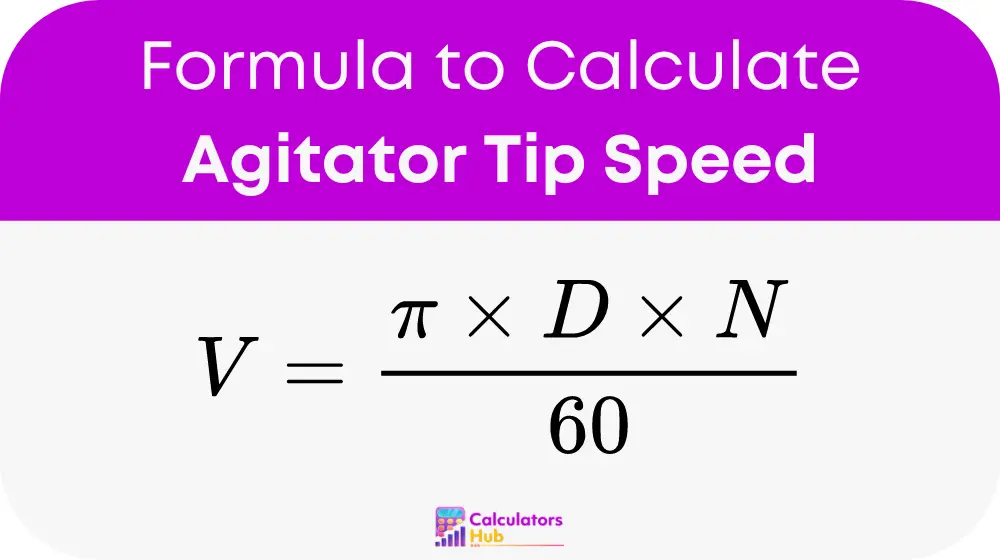The Agitator Tip Speed Calculator calculates the tip speed of an agitator, which is the speed at the edge of the agitator blade as it rotates. This speed is crucial for understanding the shear and mixing efficiency within a tank or reactor and for ensuring that the agitator operates within safe mechanical limits to prevent wear and tear.
Formula of Agitator Tip Speed Calculator
The calculation of agitator tip speed is based on the diameter of the agitator and its rotational speed:

Detailed Calculation Steps:
- Convert RPM to RPS (Revolutions per Second):
- N_rps = N / 60
- Calculate the Circumference of the Agitator Blade:
- C = π * D
- Determine the Tip Speed:
- V = C * N_rps
- Simplifying, we combine these steps into:
- V = (π * D * N) / 60
Explanation of Parameters:
- π (pi): Approximately 3.14159, represents the mathematical constant pi.
- D: Diameter of the agitator blade in meters.
- N: Rotational speed of the agitator in revolutions per minute (RPM).
- V: Tip speed of the agitator in meters per second (m/s).
Table for General Terms
To assist in understanding, here is a table of terms related to the Agitator Tip Speed Calculator:
| Term | Definition |
|---|---|
| Diameter (D) | The width of the agitator blade measured from one edge to the opposite edge through the center. |
| Rotational Speed (N) | The speed at which the agitator spins, measured in revolutions per minute (RPM). |
| Tip Speed (V) | The linear velocity at the outer edge of the agitator blade. |
| RPM to RPS Conversion | The conversion of rotational speed from minutes to seconds. |
| Circumference (C) | The distance around the edge of the circular agitator blade. |
Example of Agitator Tip Speed Calculator
Consider an agitator with a blade diameter of 0.5 meters rotating at 120 RPM. Using the Agitator Tip Speed Calculator:
- Diameter (D) = 0.5 meters
- Rotational Speed (N) = 120 RPM
- Convert RPM to RPS: 120 / 60 = 2 RPS
- Circumference (C) = π * 0.5 = 1.57 meters
- Tip Speed (V) = 1.57 * 2 = 3.14 m/s
This calculation shows that the tip speed of the agitator is 3.14 meters per second, providing vital data for assessing the mixing process.
Most Common FAQs
Tip speed is critical for determining the mixing efficiency, ensuring adequate shear and turnover without causing damage to the ingredients or excessive wear on the agitator.
Higher tip speeds can increase mixing efficiency but may also lead to higher shear forces which can be detrimental to sensitive materials or lead to faster wear.
Excessive tip speeds can cause mechanical failure of the agitator, increase wear and tear, and potentially lead to safety hazards such as leaks or spills.